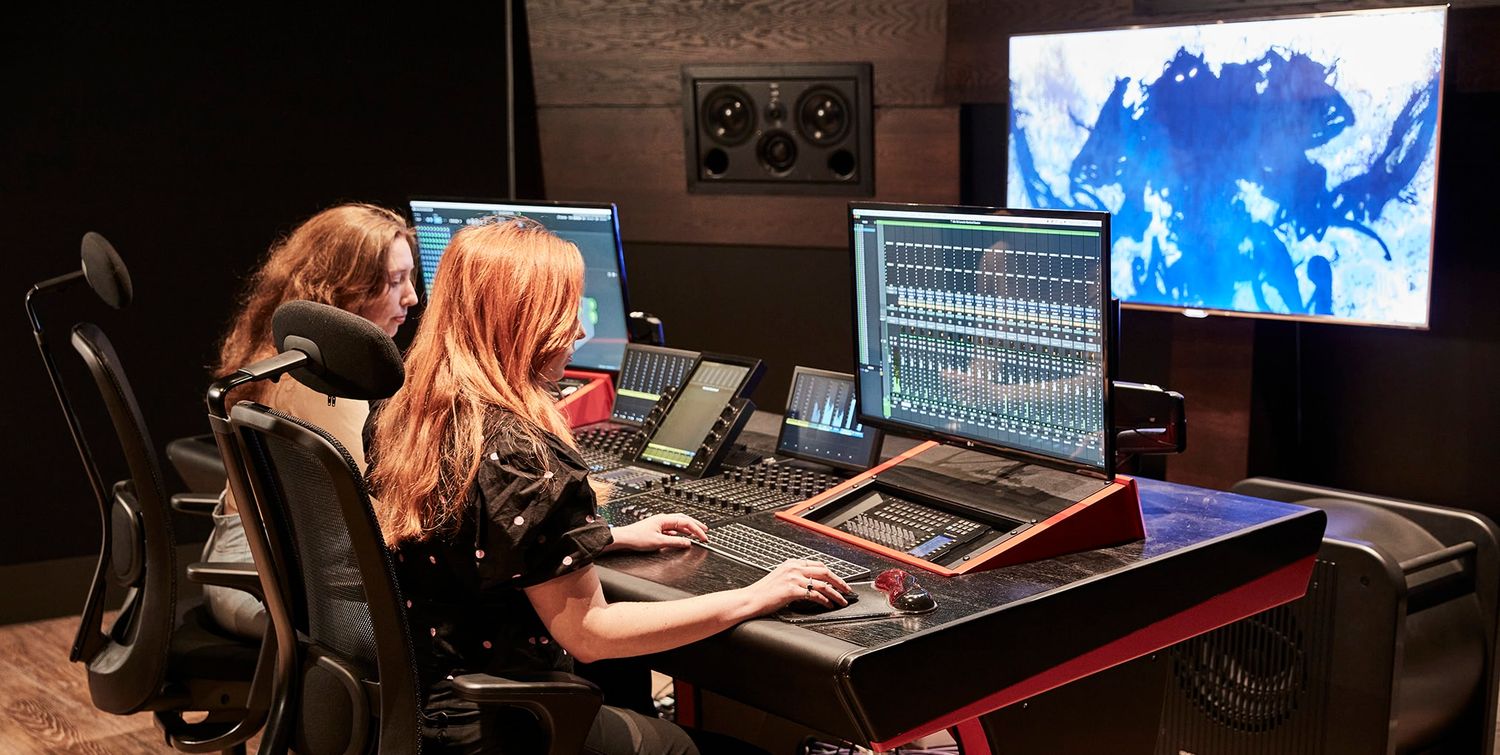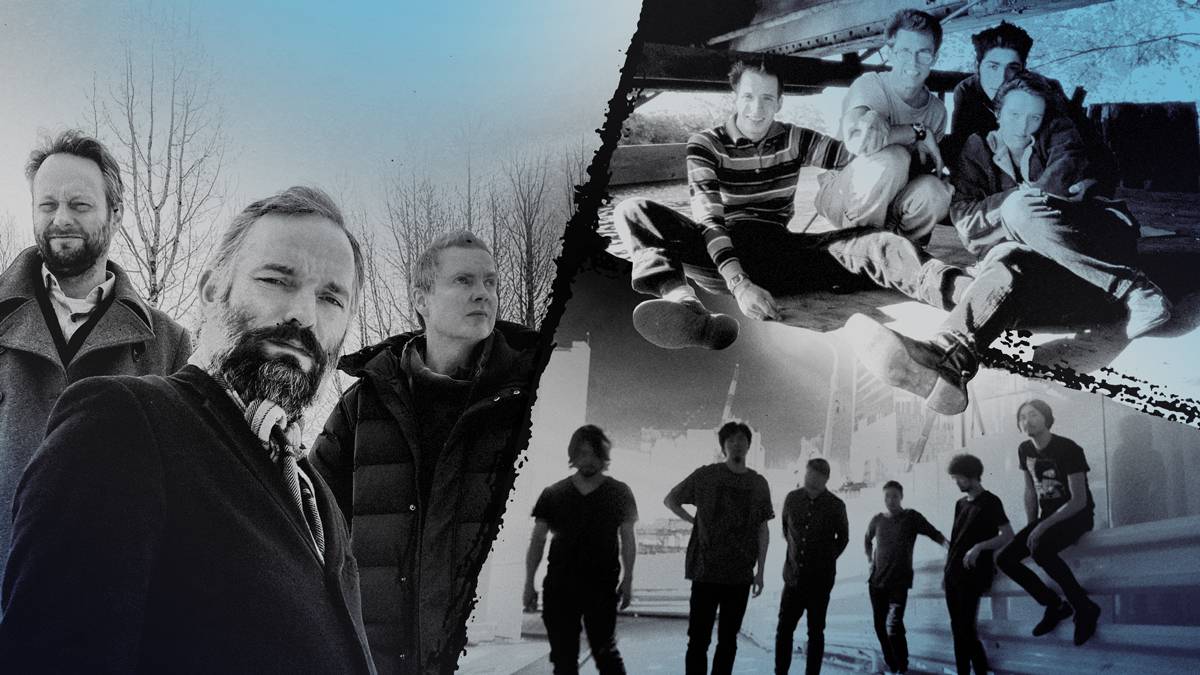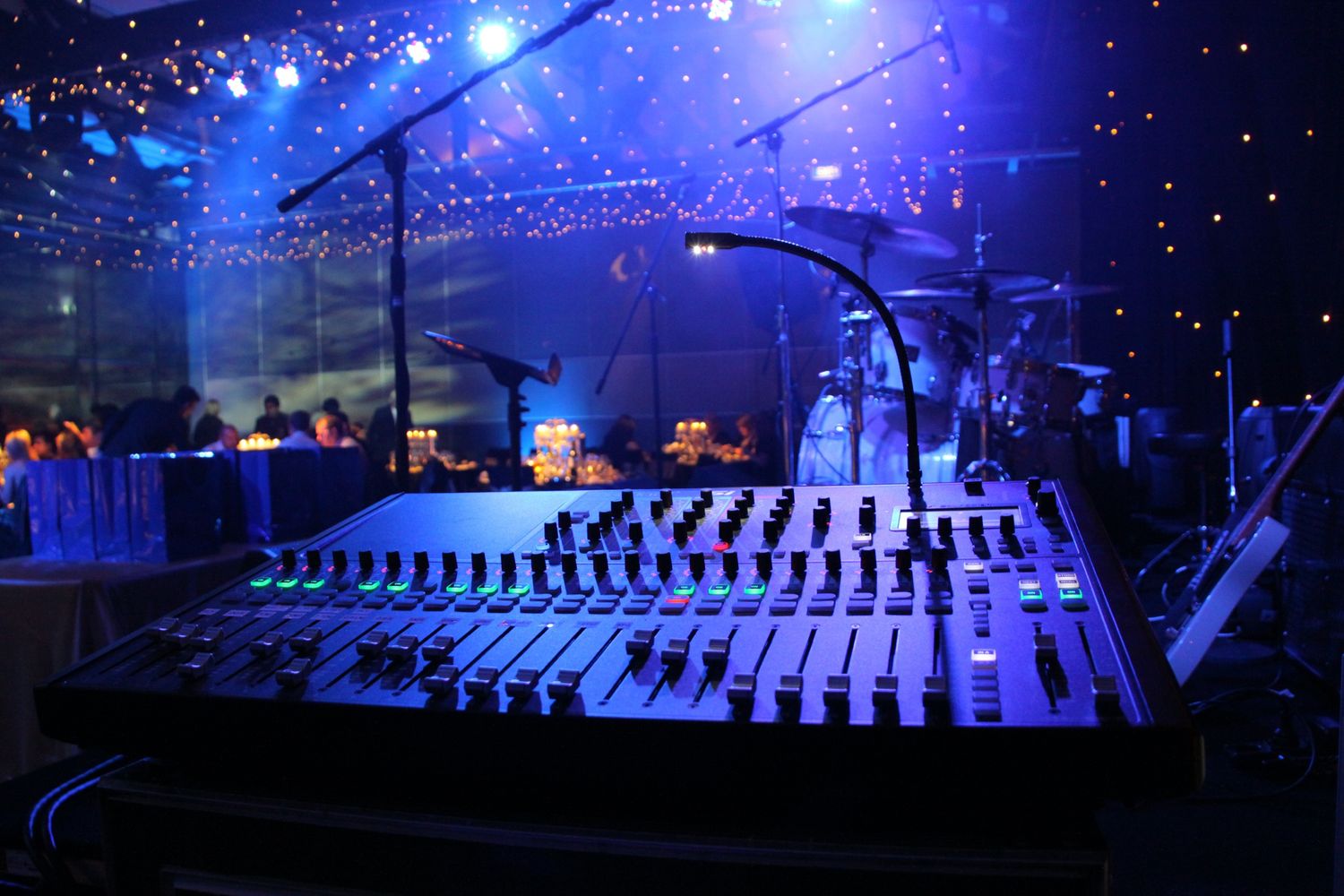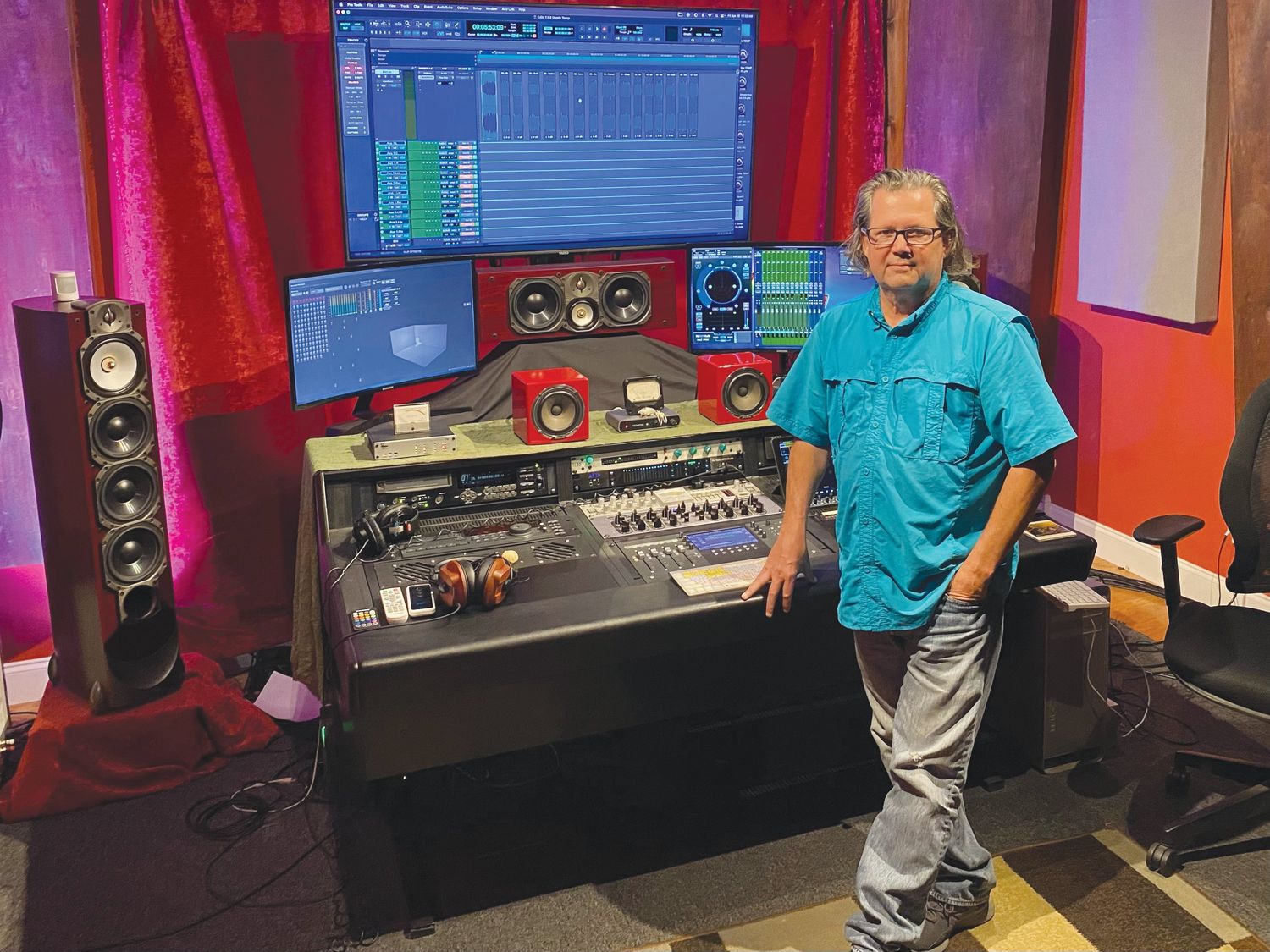Home>Production & Technology>Sound Engineer>What Does The Post Sound Engineer In A Movie Do


Sound Engineer
What Does The Post Sound Engineer In A Movie Do
Published: March 7, 2024
Discover the crucial role of a sound engineer in movies and the impact they have on creating immersive auditory experiences. Learn about the responsibilities and skills of a sound engineer in the film industry.
(Many of the links in this article redirect to a specific reviewed product. Your purchase of these products through affiliate links helps to generate commission for AudioLover.com, at no extra cost. Learn more)
Table of Contents
Introduction
When you sit down to watch a movie, you're not just experiencing a visual spectacle; you're also immersing yourself in a world of sound. From the subtle rustle of leaves in a quiet forest to the thunderous roar of a speeding train, every sound has been meticulously crafted to enhance your viewing experience. At the heart of this sonic tapestry lies the expertise of a post sound engineer.
In the realm of movie production, post sound engineers play a pivotal role in shaping the auditory landscape of a film. They are the unsung heroes who meticulously weave together dialogue, music, and sound effects to create a rich and immersive sonic experience for the audience. Their work goes beyond simply making sure that the sound is audible; it involves sculpting every sonic element to evoke emotions, build tension, and transport viewers to different worlds.
As we delve into the world of post sound engineering in movies, we'll uncover the intricate artistry and technical wizardry that goes into creating the captivating auditory experience that accompanies the visual spectacle on screen. From the responsibilities and tools of a post sound engineer to their collaboration with other departments, we'll explore the multifaceted nature of this crucial role in movie production. So, let's embark on a journey to unravel the magic behind the scenes, where every sound is meticulously crafted to captivate and enthrall the audience.
Understanding the role of a post sound engineer
At its core, the role of a post sound engineer revolves around shaping the auditory landscape of a movie during the post-production phase. This involves a meticulous and creative approach to manipulating sound elements to enhance the overall cinematic experience. Post sound engineers are entrusted with the task of ensuring that every sound, from dialogue to ambient noise and special effects, is seamlessly integrated to create a cohesive and immersive sonic environment.
One of the primary responsibilities of a post sound engineer is to enhance the clarity and quality of dialogue. This involves employing various techniques such as dialogue editing, noise reduction, and equalization to ensure that every spoken word is crisp and intelligible. Additionally, they work on integrating foley sounds, which are the everyday sound effects that mimic real-life actions, to add depth and realism to the audio.
Furthermore, post sound engineers are tasked with designing and mixing sound effects to complement the visual storytelling. Whether it's the subtle creaking of a door or the explosive impact of a car crash, these professionals meticulously select, create, and blend sound effects to evoke specific emotions and enhance the narrative. Their expertise lies in using sound to build tension, create atmosphere, and evoke visceral reactions from the audience.
In addition to dialogue and sound effects, post sound engineers also play a crucial role in shaping the film's sonic palette through music. They work closely with composers and music supervisors to ensure that the score seamlessly integrates with the visual narrative, heightening emotional impact and underscoring pivotal moments in the story.
Beyond the technical aspects, post sound engineers are also storytellers in their own right. They possess a deep understanding of how sound can be used to convey emotions, establish a sense of time and place, and immerse the audience in the cinematic world. Their creative input and technical prowess are instrumental in elevating the overall viewing experience, making them indispensable contributors to the art of filmmaking.
In essence, the role of a post sound engineer extends far beyond ensuring that the sound is audible; it encompasses a blend of technical expertise, creative vision, and a deep understanding of storytelling. These professionals are the architects of auditory immersion, sculpting every sonic element to enrich the visual narrative and transport audiences into the captivating realms of cinema.
Responsibilities of a post sound engineer
The responsibilities of a post sound engineer encompass a diverse array of tasks that are integral to shaping the auditory landscape of a film during the post-production phase. These professionals are entrusted with the crucial role of ensuring that every sound element harmoniously integrates to create a captivating and immersive sonic experience for the audience.
One of the primary responsibilities of a post sound engineer is to meticulously edit and enhance the clarity of dialogue. This involves employing advanced techniques such as dialogue editing, noise reduction, and equalization to ensure that every spoken word is crisp, intelligible, and free from any distracting background noise. By refining the quality of dialogue, post sound engineers ensure that the narrative unfolds seamlessly, allowing the audience to fully engage with the characters and storyline.
In addition to dialogue, post sound engineers are tasked with integrating foley sounds, which are the everyday sound effects that mimic real-life actions, into the audio mix. From the gentle rustling of leaves to the clinking of cutlery, these subtle yet essential sounds add depth and realism to the auditory experience, effectively transporting viewers into the world unfolding on screen.
Furthermore, post sound engineers play a pivotal role in designing and mixing sound effects to complement the visual storytelling. Whether it's the subtle creaking of a door, the distant rumble of thunder, or the explosive impact of a car crash, these professionals meticulously select, create, and blend sound effects to evoke specific emotions, build tension, and enhance the narrative. Their expertise lies in using sound to create a visceral and immersive experience, amplifying the impact of visual sequences and eliciting emotional responses from the audience.
Moreover, post sound engineers collaborate closely with composers and music supervisors to seamlessly integrate the musical score with the visual narrative. By skillfully balancing and blending the music with other sound elements, they ensure that the score enhances the emotional depth of the story, underscores pivotal moments, and resonates with the audience on a profound level.
In essence, the responsibilities of a post sound engineer encompass a harmonious blend of technical expertise and creative vision. These professionals are entrusted with the task of sculpting every sonic element to enrich the visual narrative, evoke emotions, and transport audiences into the captivating realms of cinema. Their meticulous attention to detail and artistic sensibilities make them indispensable contributors to the art of filmmaking.
Collaboration with other departments
Collaboration lies at the heart of the post sound engineer's role in movie production, as they work closely with various departments to ensure a seamless integration of sound with the visual narrative. This collaborative effort is essential for creating a cohesive and immersive cinematic experience that resonates with audiences on a profound level.
One of the key departments that post sound engineers collaborate with is the editing team. They work hand in hand with film editors to synchronize sound with visual sequences, ensuring that every sound effect, dialogue, and musical cue aligns perfectly with the on-screen action. This collaborative process demands precision and synchronization, as the seamless integration of sound and visuals is crucial for maintaining the narrative flow and emotional impact of the film.
Furthermore, post sound engineers collaborate extensively with the music department, including composers and music supervisors. This collaboration involves aligning the musical score with the visual storytelling, ensuring that the emotional nuances of the story are accentuated through the power of music. By working closely with composers, post sound engineers contribute to the creation of a sonic landscape that heightens the audience's emotional engagement and enriches the overall viewing experience.
In addition, collaboration with the directing and production teams is paramount for post sound engineers. They engage in detailed discussions with directors and producers to understand the creative vision and sonic requirements of the film. This collaborative exchange of ideas allows post sound engineers to tailor the auditory elements to align with the director's vision, ensuring that the sound design complements and enhances the intended cinematic experience.
Moreover, the collaboration extends to the foley artists and sound designers, with whom post sound engineers work closely to integrate foley sounds and sound effects seamlessly into the audio mix. This collaborative effort involves meticulous attention to detail, as the foley sounds play a crucial role in adding depth and realism to the auditory experience, effectively transporting viewers into the world unfolding on screen.
In essence, the collaborative nature of a post sound engineer's role extends across various departments, encompassing a harmonious exchange of ideas and expertise. By collaborating with film editors, composers, directors, and other key departments, post sound engineers contribute to the creation of a rich and immersive auditory landscape that elevates the cinematic experience and captivates audiences worldwide.
Tools and techniques used by post sound engineers
Post sound engineers employ a diverse array of tools and techniques to meticulously craft the auditory landscape of a film during the post-production phase. These professionals harness cutting-edge technology and creative methodologies to ensure that every sound element seamlessly integrates, creating a captivating and immersive sonic experience for the audience.
One of the primary tools utilized by post sound engineers is digital audio workstations (DAWs), such as Pro Tools, Logic Pro, and Adobe Audition. These sophisticated software platforms serve as the central hub for editing, mixing, and manipulating audio tracks. With a wide range of features including multitrack editing, real-time effects processing, and automation capabilities, DAWs empower post sound engineers to sculpt and refine every sonic element with precision and artistry.
In addition to DAWs, post sound engineers rely on a myriad of plugins and software instruments to enhance the sonic palette of a film. From equalizers and compressors to reverbs and spatial processors, these plugins offer a wealth of sonic manipulation tools that enable post sound engineers to shape the tonal characteristics, spatial depth, and dynamic range of audio elements. Furthermore, software instruments such as virtual synthesizers and sample libraries provide a rich sonic canvas for creating and integrating musical elements into the film's soundtrack.
Moreover, post sound engineers utilize advanced techniques such as sound design and audio processing to elevate the auditory experience. Sound design involves the creation and manipulation of original sound effects to complement the visual storytelling, requiring a blend of creativity and technical expertise. Additionally, audio processing techniques including equalization, compression, and spatial panning are employed to refine the sonic texture, balance, and spatial placement of sound elements, ensuring a cohesive and immersive auditory experience.
Furthermore, the use of field recording equipment is integral to capturing real-world sounds and foley effects. Post sound engineers utilize high-quality microphones, portable recorders, and sound isolation tools to capture a diverse range of sounds, from ambient environments to specific foley actions. These recordings serve as the raw material for integrating authentic and evocative sound effects into the film's audio mix.
In essence, the tools and techniques employed by post sound engineers represent a harmonious blend of technological innovation and creative artistry. By leveraging advanced software, plugins, sound design, and field recording equipment, these professionals sculpt every sonic element with meticulous attention to detail, enriching the visual narrative and transporting audiences into the captivating realms of cinema.
Importance of post sound engineering in movie production
Post sound engineering stands as a cornerstone of movie production, wielding a profound influence on the overall cinematic experience. The significance of post sound engineering extends far beyond mere technical prowess; it encompasses the art of storytelling through sound, elevating the emotional impact and immersive quality of films.
At its core, post sound engineering serves as a catalyst for audience engagement and emotional resonance. By meticulously shaping the auditory landscape, post sound engineers have the power to evoke a myriad of emotions, from suspense and excitement to nostalgia and melancholy. Every sound, whether it's the gentle rustling of leaves or the thunderous roar of a waterfall, is meticulously crafted to elicit visceral responses and immerse viewers in the cinematic world.
Furthermore, post sound engineering plays a pivotal role in enhancing the narrative coherence and clarity of films. Through advanced techniques such as dialogue editing, noise reduction, and sound design, post sound engineers ensure that every spoken word is crisp and intelligible, allowing the audience to fully engage with the characters and storyline. This clarity of sound is essential for maintaining the narrative flow and emotional resonance, underscoring the indispensable role of post sound engineering in movie production.
Moreover, the sonic landscape crafted by post sound engineers serves as a powerful tool for world-building and environmental immersion. Whether it's the bustling streets of a vibrant city or the serene tranquility of a remote wilderness, the sonic tapestry created by post sound engineers transports audiences into diverse and captivating realms. This immersive quality of sound enriches the visual narrative, creating a multi-sensory experience that captivates and enthralls viewers.
Additionally, post sound engineering contributes to the overall aesthetic and artistic vision of films. The seamless integration of dialogue, music, and sound effects, meticulously balanced and sculpted by post sound engineers, enhances the cinematic experience, elevating the storytelling to new heights. The sonic palette created by these professionals adds depth, texture, and emotional resonance to the visual narrative, underscoring the indispensable role of post sound engineering in shaping the artistic identity of films.
In essence, the importance of post sound engineering in movie production cannot be overstated. It serves as the invisible hand that guides audiences through a rich and immersive auditory journey, heightening emotional impact, enhancing narrative coherence, and enriching the overall cinematic experience. The artistry and technical expertise of post sound engineers are instrumental in shaping the sonic identity of films, making them indispensable contributors to the captivating realms of cinema.
Conclusion
In the realm of movie production, the role of a post sound engineer emerges as a linchpin in shaping the auditory landscape of films. From the meticulous editing of dialogue to the artful integration of sound effects and music, post sound engineers orchestrate a symphony of sonic elements that enrich the visual narrative and captivate audiences. Their responsibilities extend beyond technical expertise, encompassing a blend of creative vision and storytelling prowess that elevates the overall cinematic experience.
The collaborative nature of post sound engineering, evident in the seamless integration with other departments, underscores its pivotal role in creating a cohesive and immersive auditory journey. Through close collaboration with film editors, composers, directors, and foley artists, post sound engineers contribute to the harmonious fusion of sound and visuals, ensuring that every sonic element aligns seamlessly with the narrative flow and emotional resonance of the film.
The tools and techniques employed by post sound engineers represent a harmonious blend of technological innovation and creative artistry. From advanced digital audio workstations to the art of sound design and field recording, these professionals harness a diverse array of resources to sculpt every sonic element with meticulous attention to detail, enriching the visual narrative and transporting audiences into the captivating realms of cinema.
The importance of post sound engineering in movie production resonates deeply in its ability to evoke emotions, enhance narrative coherence, and immerse audiences in diverse cinematic worlds. The sonic landscape crafted by post sound engineers serves as a powerful tool for world-building and environmental immersion, enriching the visual narrative and creating a multi-sensory experience that captivates and enthralls viewers.
In essence, the artistry and technical expertise of post sound engineers stand as the invisible hand that guides audiences through a rich and immersive auditory journey. Their contributions, often unseen but profoundly felt, elevate the emotional impact, narrative coherence, and artistic identity of films, making them indispensable contributors to the captivating realms of cinema.











